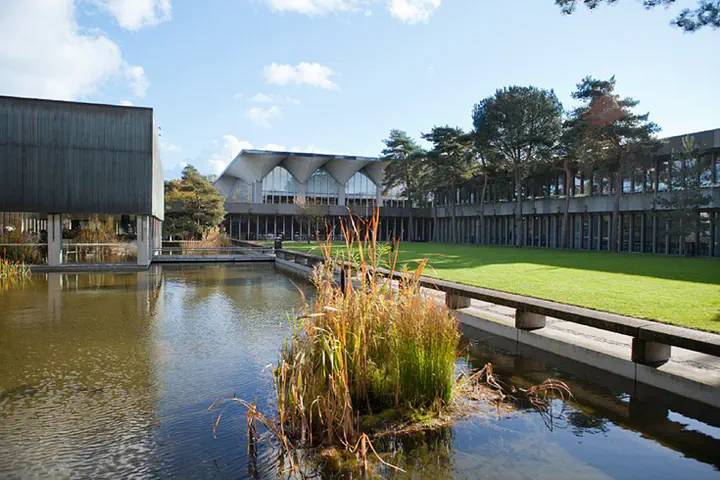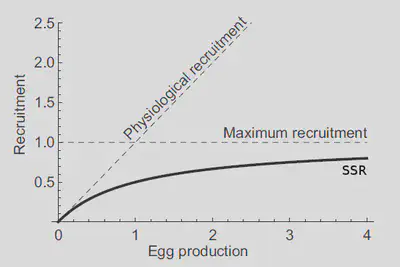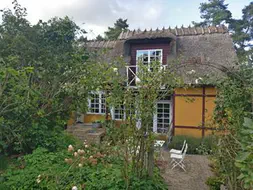A week at the Technical University of Denmark
(Almost) All About That Size Spectrum
 Image credit: Technical University of Denmark
Image credit: Technical University of DenmarkIt is late at night and rain is storming outside while I stay warm inside a Greek restaurant and it’s with a nice glass of red in one hand that I start to write this blog post. It’s been a few days that I have been roaming the campus of the Technical University of Denmark (DTU), in a small town called Lyngby north of Copenhagen where I found an Airbnb taken straight out of an Asterix comic, with thatch roof and lime wall but strangely modern inside.
The first time I entered the Centre for Ocean life, its modern architecture made me feel like being inside Relativity from M. C. Escher (see gallery). It took me some time to find Ken H. Andersen’s office, who had invited me to spend some time at the DTU, but a few seconds after I finding him we were already drawing size spectrums diagrams and talking about model trade-offs, Danish efficiency I assume.
An unfortunate student passing by at that same moment got snatched away and was charged with the mission to show me around and introduce me to the scientists I was scheduled to meet during my stay. I got a desk to be able to leave my stuff in between presentations and coffee-break networking sessions. Coming from a noisy open plan to a small office with 10 desks so quiet that one would be able to hear a pin drop, I was afraid of even plugging in my laptop and disturbing everyone.
Nonetheless, my office mates were warm and welcoming. I used my time at the DTU mainly to meet people from Ken Andersen’s team, making the connection between Tasmania’s and Denmark’s size spectrum communities. The week went by extremely fast as I was running between people to meet, presentations to see or to give, and the book launch of Ken’s new monograph “Fish Ecology, Evolution and Exploitation - A New Theoretical Synthesis”. With so many people working on size spectra there are many aspects and approaches to explore and tons of ideas going around, a lot of them gravitating around resolving coexistence for multi-species ecosystems. As a matter of fact, I was relieved to see that we all have the same kinds of issues and everybody would love to get rid of stock recruitment relationships. Unfortunately, we still need them as otherwise, with more than 3 species in the same ecosystem, one species will out-spawn the other ones and drive them to extinction. The stock recruitment relationship introduces early life density dependence which stops this from happening.

How nice would it be to have emerging coexistence without having the hard coded restriction of spawning stock biomass. A good solution is to make prey less available to be eaten, hiding them from predators, which can be done in different ways. Prey availability has been explored by Rogers et al. (2014) who used sea floor structural complexity which allows hiding spots, or by Hartvig et al. (2011) who introduced mathematical restraints in the form of an interaction matrix. My preferred approach so far, however, is depth, used as a parameter influencing feeding ground. This was one of the topics I was excited to discuss with Pieter Daniel Van Denderen, a Postdoc here at DTU.
Another solution could be to increase the diversity within the modelled ecosystems. Zhang et al. (2013) showed that this theory can be implemented by adding traits and Blanchard et al. (2011) used different feeding strategies. Both approaches achieved the desired effect of enhanced ecosystem stability. Why not push the diversity further by including a better representation of the non-fish species, such as cephalopods or zooplankton, and cartilaginous fishes? But, would increasing the complexity of the size spectrum increase stability or wreak havoc? Probably a bit of both. And of course, as Ken Andersen would ask right away, what are the trade-offs?! My favourite times were discussing these topics during the casual breaks with everyone at 3pm next to a machine which had hot chocolate in seemingly infinite supply, tied with getting lost trying to go from one office to another and ending up at a game of table football in one of the building’s secret rooms.
After a size spectrum workshop followed by the ICES annual science conference in Sweden, I was happy to find people I had met before. With so many people working on different aspects of the size spectrum, it is as if every time someone joins the team, a new aspect of size spectrum theory is discovered. Unfortunately, my stay here has come to an end, and I’m off to Copenhagen’s train station.
Next stop: summer in the French countryside, and then it’s back to the beautifully cold island of Tasmania.

